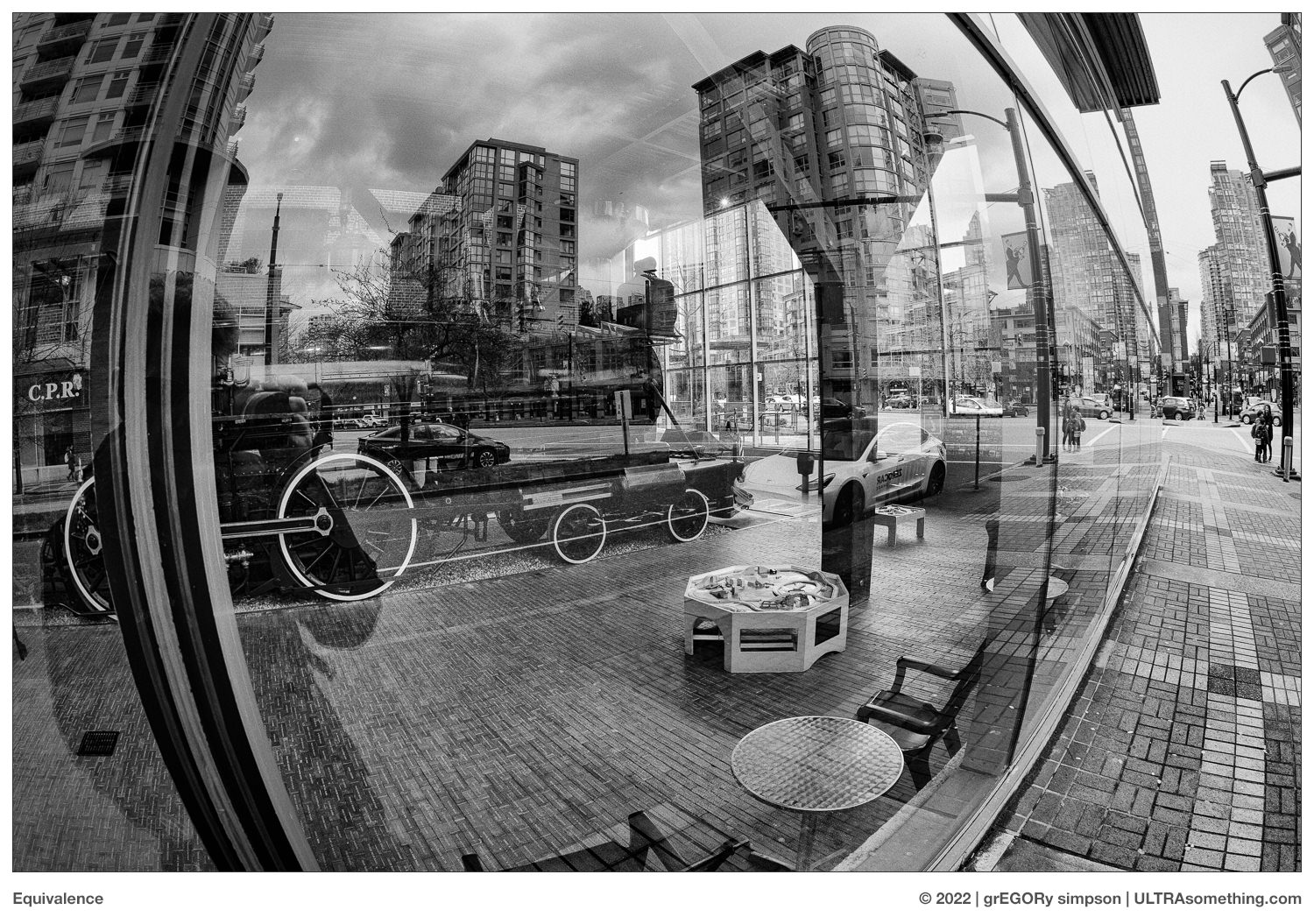
The shortest path between two points is a straight line. Rarely is it the most interesting. And in the physical world, rarely is it as straight as you think — linearity being as much about perception as certitude.
For example, if I’m in the middle of the Bonneville Salt Flats, and I wish to walk the shortest possible path to a point only 5km away, I’m going to need a shovel. How else am I going to dig a trench — 2 meters deep at the midpoint — to counteract the curvature of the earth? No shovel, no straight line.
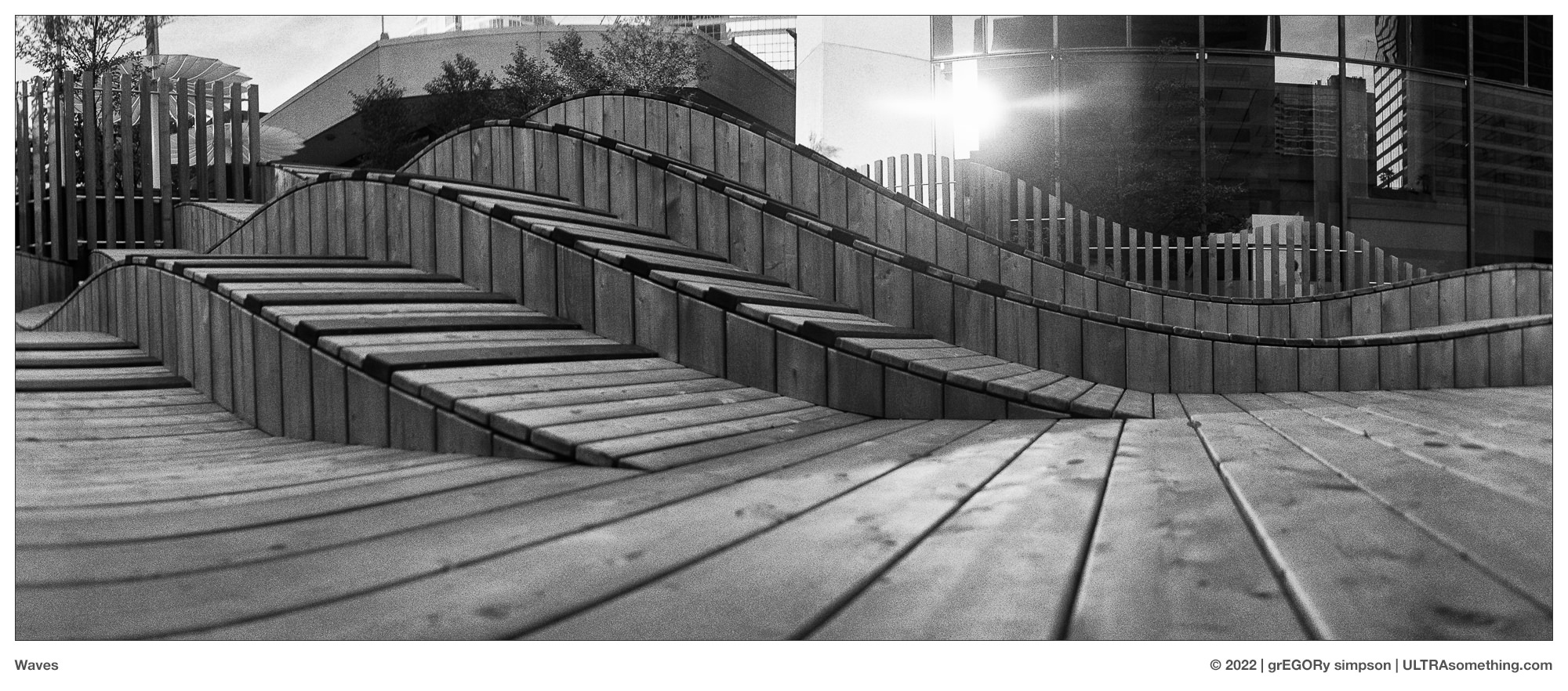
Our world is awash in trajectories we perceive as linear, but really aren’t. Time dilation anyone? It might take a rocket scientist to build a device for travelling to another solar system and back; but it doesn’t take a rocket scientist to know that a quick, 2-year roundtrip voyage from the astronaut’s perspective could result in the passing of, say, 60 years here on earth.

Fortunately, I’m not here to bore you with the impractical. Instead, I’m here to bore you with something else entirely: our bodies. The very surface upon which we visualize our surroundings — the retina — is spherical, and the images projected upon it are curved. Our brain intuits the true nature of the objects, and auto-flattens any bowed projections accordingly. It’s the same sort of optical post-processing we perform when our brain is fed an upside-down and reversed retinal projection, and flips it around to match the orientation of our own bodies.
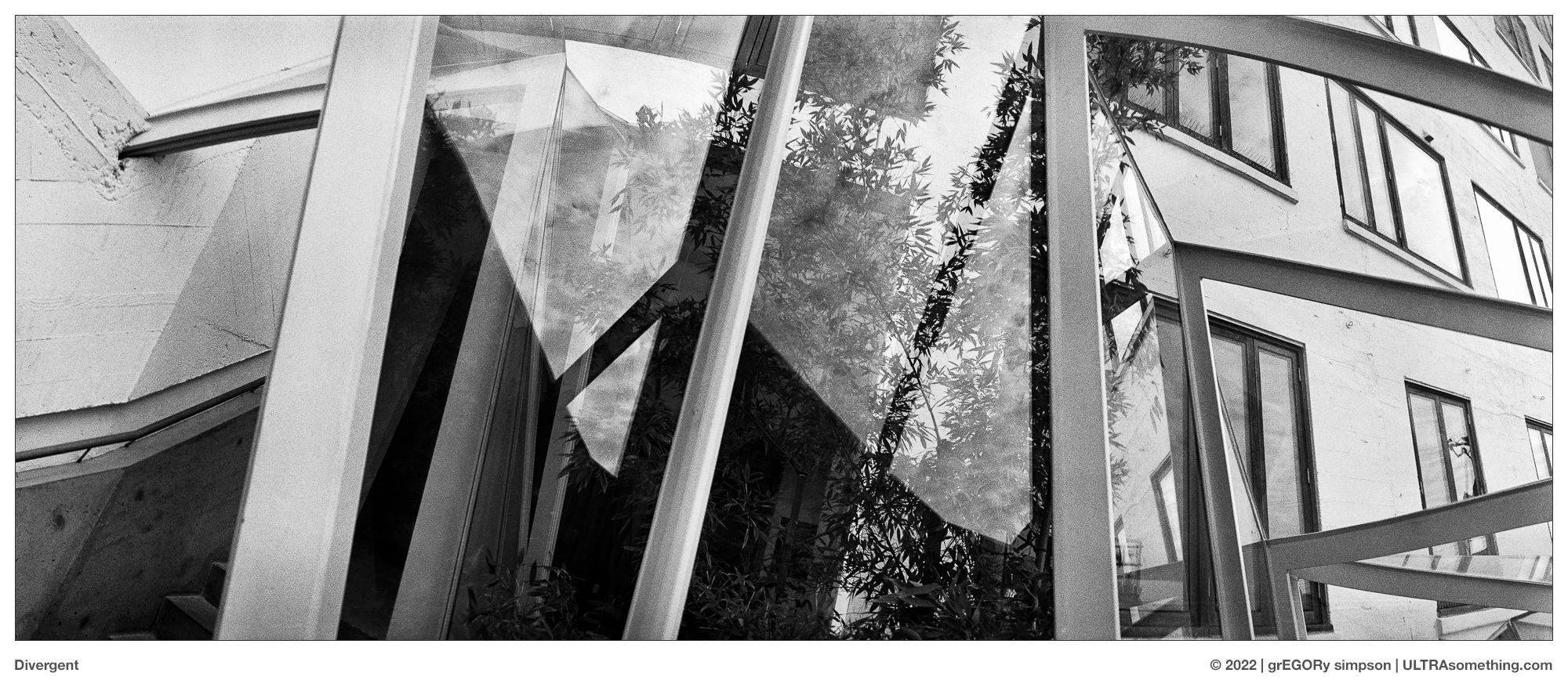
In other words, what we think we see isn’t necessarily what we really see. Which, as a photographer, gives me carte blanche to do anything I want — including ditching the idea that a photograph needs to have straight lines just because our brains are fooling us into believing they should be.
The whole idea of curvature is what occasionally pulls me into the realm of fisheye lenses, and what keeps me constantly in the realm of the Widelux camera. Both will bow lines we believe to be linear.
In the case of a fisheye lens, a spherical object is used to project an image onto a flat surface, resulting in a curvilinear perspective in which both horizontal and vertical lines are rendered as curves.
In the case of the Widelux, a rectilinear lens rotates in a horizontal arc across the scene, and the image is projected onto a curved surface of equal radius. This gives a particularly unique look, in which vertical lines remain straight while horizontal lines become bowed.
Both techniques delight me to no end, because both mess with our brain’s construct of what an object is supposed to look like. In the common vernacular, we call these “distortions,” but I believe this is a term born of bias. In reality, any projection of a 3-dimensional space onto a 2-dimensional surface results in “distortion.” The question is which elements are being distorted, not whether any distortion occurs.
Most lenses are of rectilinear design, meaning they’re engineered to keep lines as straight as possible — a feat they achieve at the expense of dimensional integrity. Anyone who’s ever shot a wide angle lens has surely seen the grotesque way in which objects near the borders are stretched wildly out of shape in order to preserve linearity. To me, this is no less a form of “distortion” than the fisheye, which keeps relative dimensions intact at the expense of linearity.
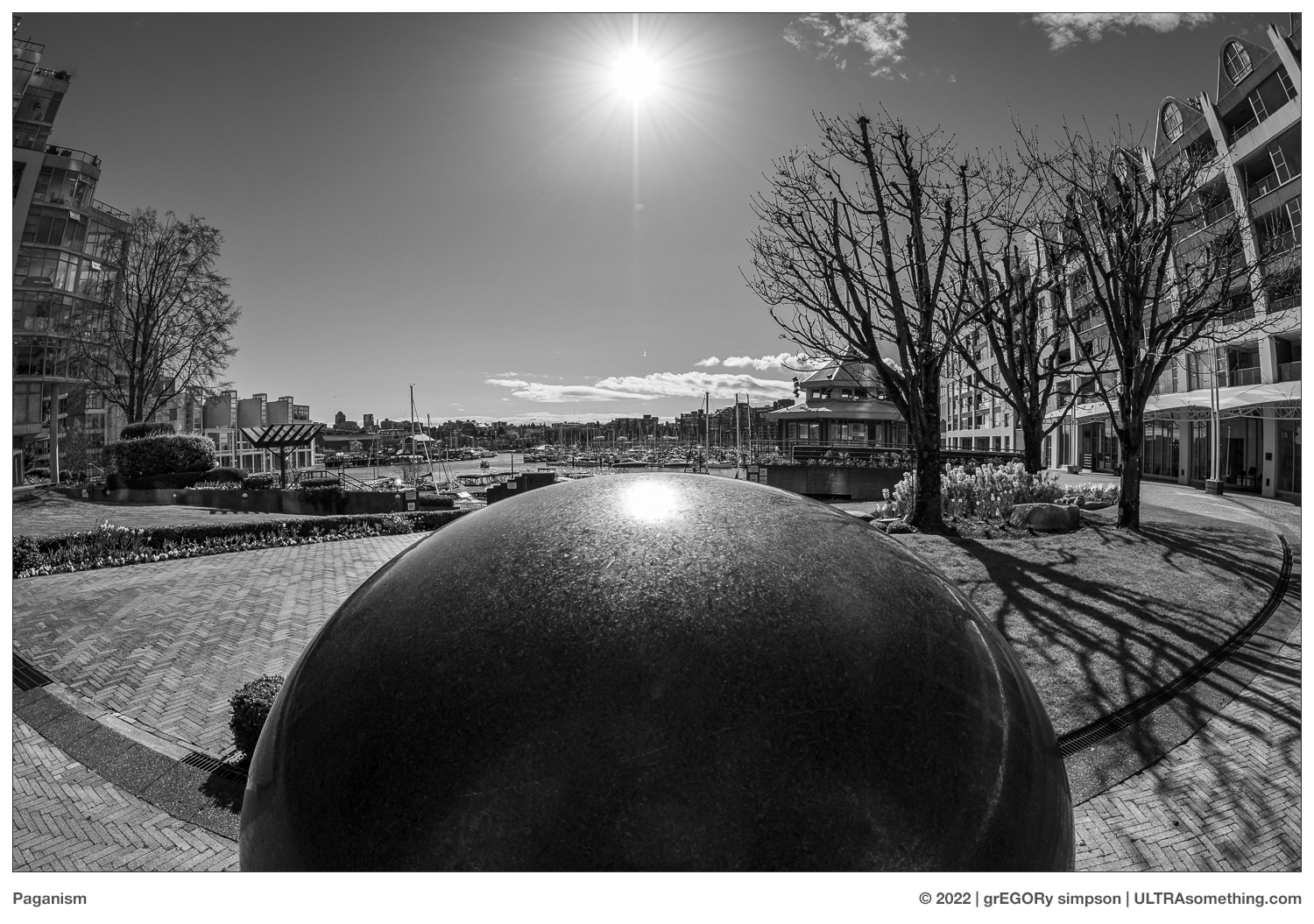
In fact, I’d even suggest that our brains can more easily acclimate to curvilinear photographs than rectilinear ones — at least at wide angles. That’s because we’re already accustom to interpreting curved retinal projections as straight lines. In contrast, we’re not accustom to interpreting stretched objects, so we’ll never really succeed in ignoring those wide-angle rectilinear distentions.
It’s a belief backed up by my own experience: The more time I spend looking at photos from a Widelux or fisheye, the less I notice the curvature — my brain easily intuits which lines should be straight, and it soon begins to simply interpret them as such. Since we’re all born with the straightening algorithm installed in our occipital lobes, all we need to do is access it. In contrast, since our brains don’t have any real-time de-stretching code installed, we can’t un-see the elongated objects at the edge of a standard wide angle photo.
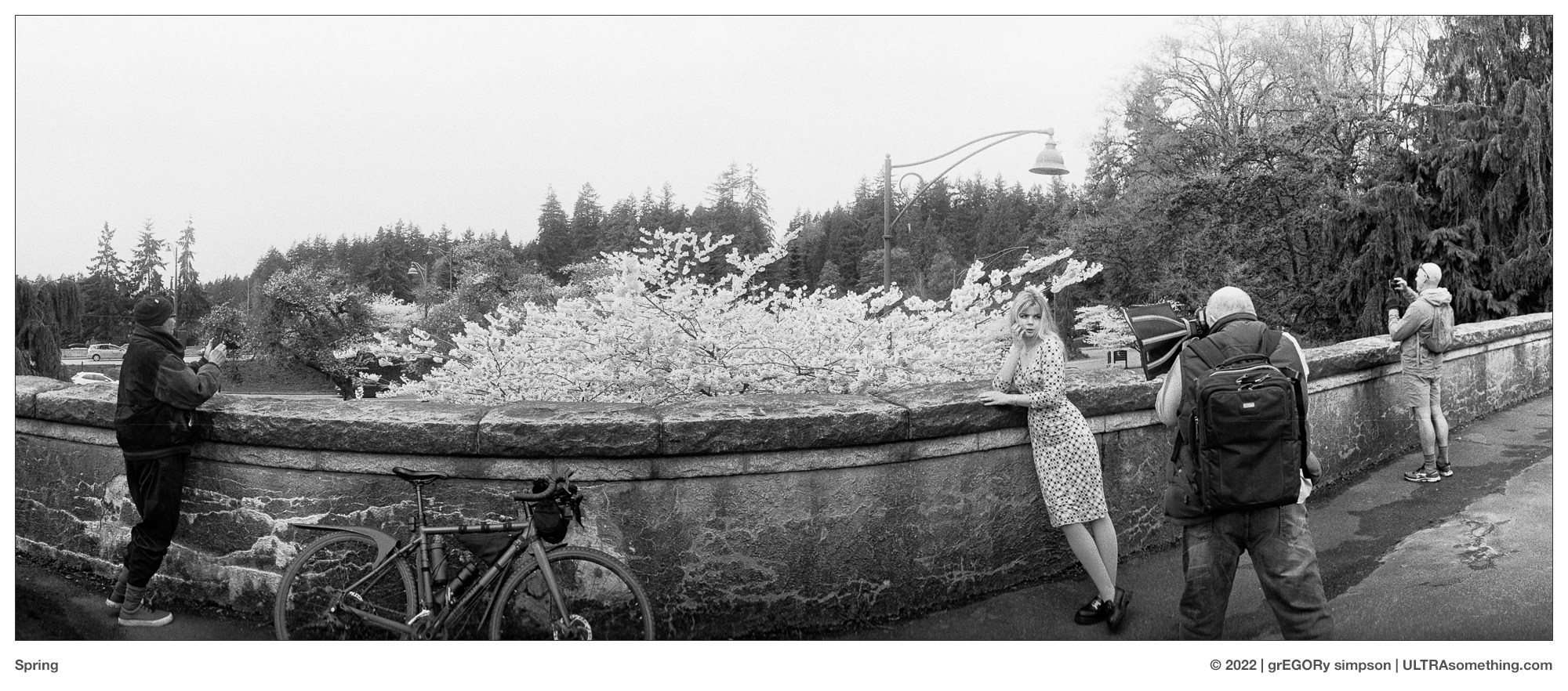
Ultimately, it doesn’t matter which method — curvilinear or rectilinear — is closer to ‘reality,’ since ‘reality’ has little to do with what I’m trying to accomplish with photography. The simple fact I have no interest in colour should tell you that.
So for me, the party starts once I become aware of all the abstract possibilities of a curvilinear perspective — how I can alter spacial relationships by shifting an object’s location in the frame; how I can place arched surfaces contrary to the direction of the camera’s curvature to actually straighten them; and how I can tilt the lens to enhance or minimize the effects of the curvature — emphasizing and deemphasizing sections of the frame accordingly.
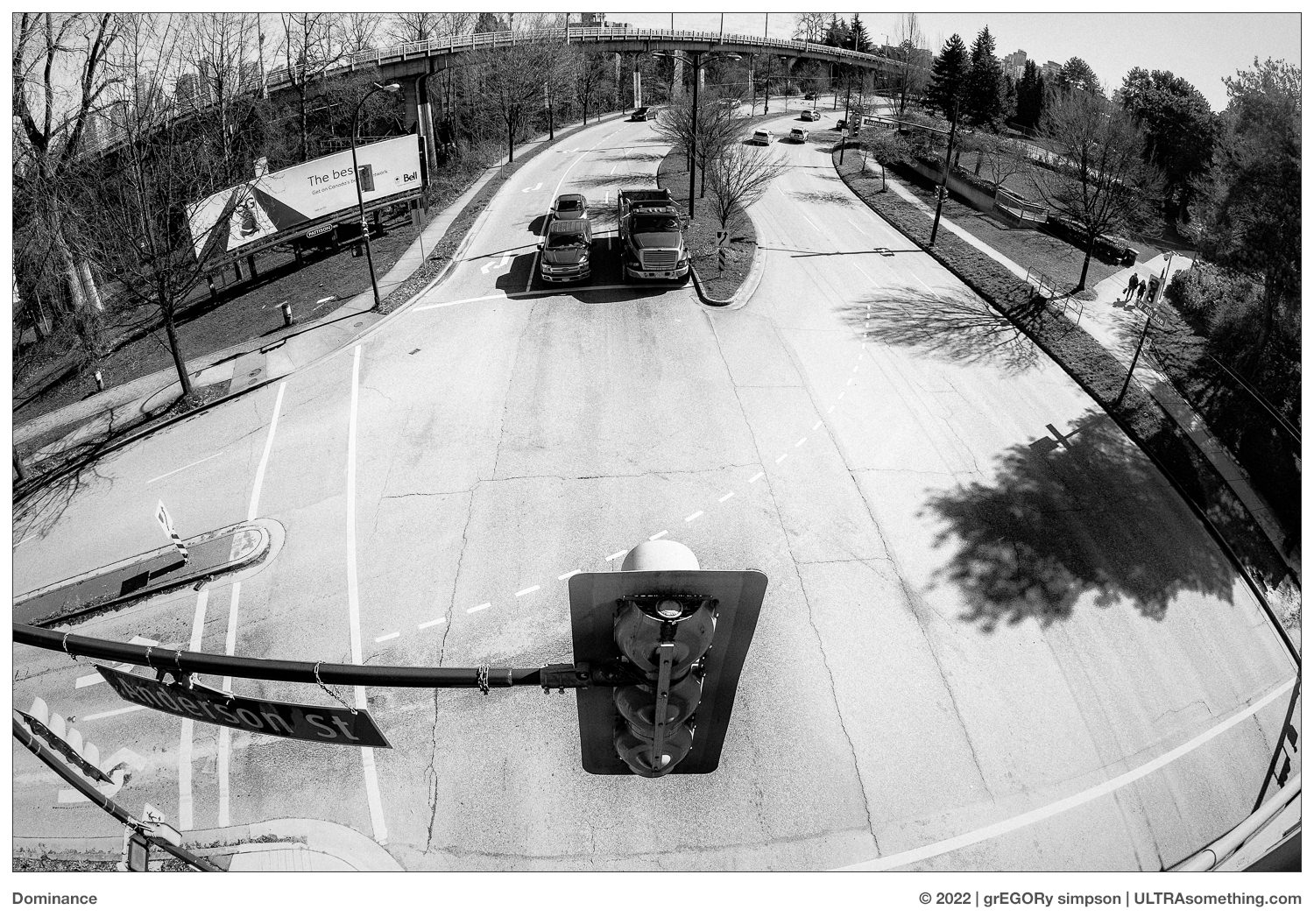
The notion that lines should be straight is just another arbitrary photography construct — no different than a belief that a good photo is sharp; has level horizons; adheres to the rule-of-thirds; or any of that other hooey. Whether you’ve got a blank frame of film or some empty space on your memory card, the only reality is that you’re free to record anything you want onto it. With that in mind, is the shortest path really the one you want to take?
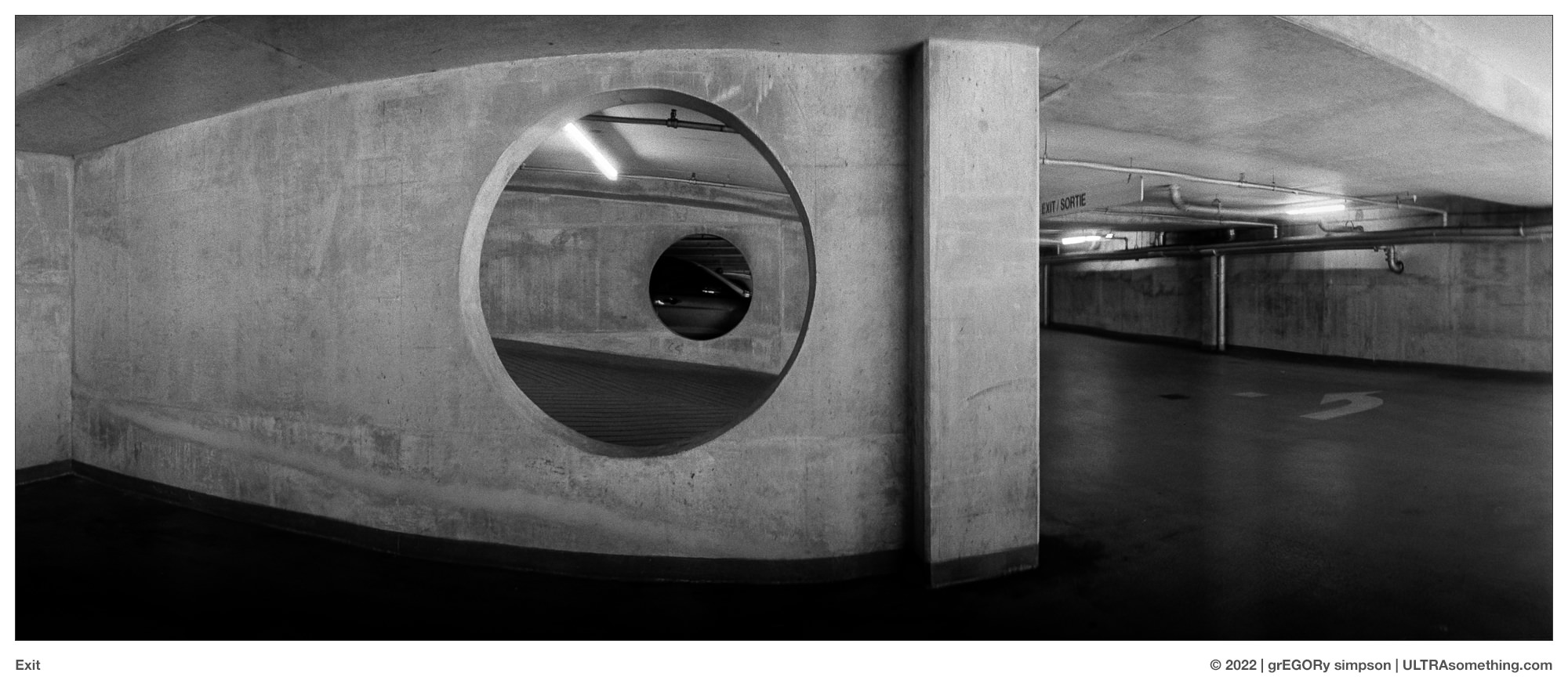
© 2022 grEGORy simpson
ABOUT THE PHOTOS: Equivalence, Deco, Paganism, Dominance and Enveloped were all shot with my new (to me) Olympus M. Zuiko ED 8mm f/1.8 Fisheye Pro lens on an OM Systems OM-1 camera (yes, I’ve doubled down on Micro Four Thirds). Waves and Divergent were shot with a Widelux F7 on Acros II at ISO 100, and developed in Rodinal (Blazinal) 1:50. Spring and Exit were also shot on a Widelux F7 — this time on Fomapan 100, and stand developed for one hour in a mixture of HC-110 and Rodinal.
REMINDER: If you’ve managed to extract a modicum of enjoyment from the plethora of material contained on this site, please consider making a DONATION to its continuing evolution. As you’ve likely realized, ULTRAsomething is not an aggregator site. Serious time and effort go into developing the original content contained within these virtual walls — even the silly stuff.




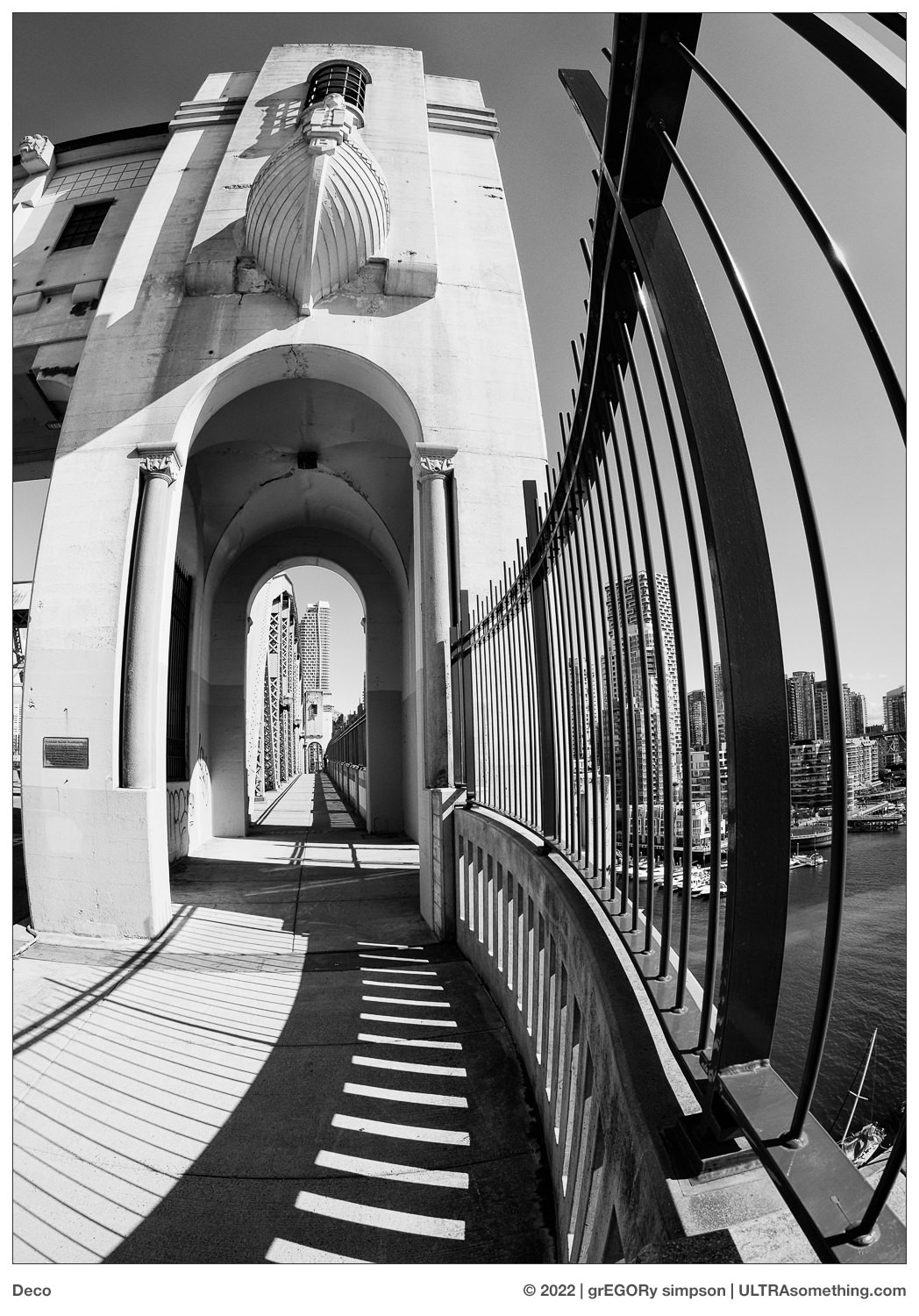
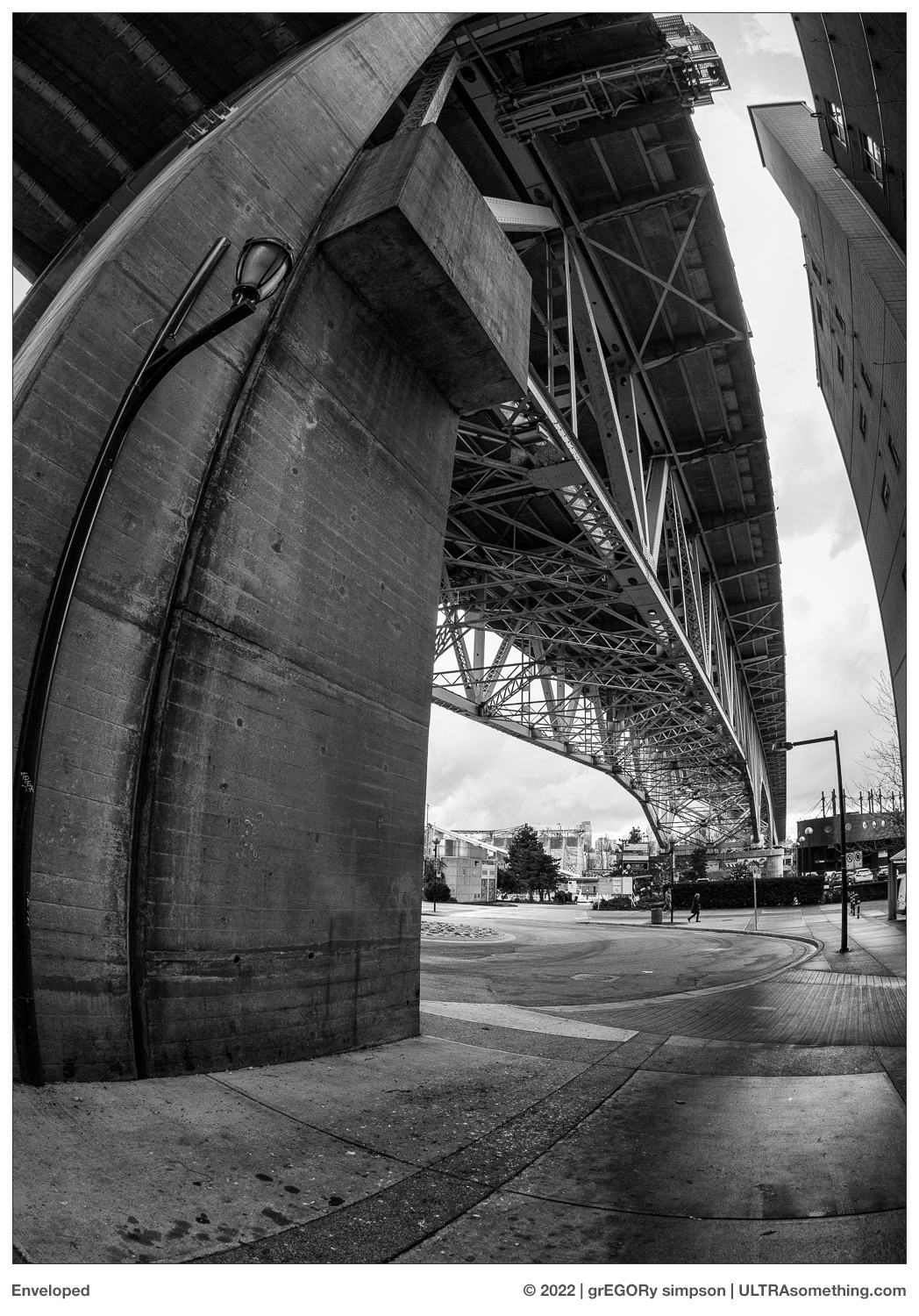
Great entertaining post, Egor (this one too), and very interesting with your (not always so straight) well expressed thoughts and reflections around the subject. Lovely images, and it really looks like a man’s head on the Paganism, with my ”haircut”, ha!
Best!
And here I thought I wasn’t the sort of photographer who would ever take head shots.
Corporate head-shots got me through college. I don’t miss the experience.
I thought I would de-lurk to say this post changed the way I look at geometric distortions in images. I have never been a big fan of fisheye photos, but now I think that may be because so many of them are overdone. From my rectilinear perspective the images in this article appear to be more thoughtfully composed than the average fisheye image. It seems you have made the distortion enhance the composition rather than detracting from it.
This post, along with last month’s “Walking Man”, have given me some interesting things to think about.
Oh, by the way, I hope I have not offended you by saying I like your work.
Hi Wally: Thanks for stepping out of the shadows, and weighing in with compliments. In spite of appearances to the contrary, I actually do appreciate them.
I know what you’re saying about fisheyes — and I’m just as guilty as the next guy of using them to take silly, close up portraits that give people gigantic noses and tiny ears. But like every piece of photography gear, if you think a bit about its optical characteristics, then you can think of something that would benefit from being shot with it. For me, what’s fun about photography is scouting for scenes that a particular lens or camera would flatter. Every piece of gear makes you see your surroundings in an entirely different way.